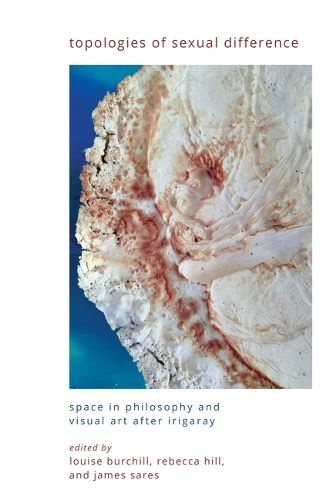Readings Newsletter
Become a Readings Member to make your shopping experience even easier.
Sign in or sign up for free!
You’re not far away from qualifying for FREE standard shipping within Australia
You’ve qualified for FREE standard shipping within Australia
The cart is loading…






Brings together wide-ranging, interdisciplinary analyses of Luce Irigaray's rethinking of space with respect to sexual difference and the visual arts.
A rethinking of space is central to Luce Irigaray's philosophy of sexual difference. Topologies of Sexual Difference is the first edited collection to focus on this task through a sustained consideration of both Irigaray's critique of the Western tradition's systematic conflation of femininity and space and her transvaluative topological redeployment of space in theorizing sexual difference. Across thirteen chapters, Irigarayan space is thematized as porous, fluid, continuous, and self-differentiating. Contributors engage with the origins of life, affect, the aesthetics of the maternal and placental, an Irigarayan morphology inclusive of trans embodiment, and-in a rare focus-the expression of sexuate specificity in creative practice. Topologies of Sexual Difference thus demonstrates the fundamental importance of Irigaray's rethinking of space for Western philosophy and the visual arts.
$9.00 standard shipping within Australia
FREE standard shipping within Australia for orders over $100.00
Express & International shipping calculated at checkout
Brings together wide-ranging, interdisciplinary analyses of Luce Irigaray's rethinking of space with respect to sexual difference and the visual arts.
A rethinking of space is central to Luce Irigaray's philosophy of sexual difference. Topologies of Sexual Difference is the first edited collection to focus on this task through a sustained consideration of both Irigaray's critique of the Western tradition's systematic conflation of femininity and space and her transvaluative topological redeployment of space in theorizing sexual difference. Across thirteen chapters, Irigarayan space is thematized as porous, fluid, continuous, and self-differentiating. Contributors engage with the origins of life, affect, the aesthetics of the maternal and placental, an Irigarayan morphology inclusive of trans embodiment, and-in a rare focus-the expression of sexuate specificity in creative practice. Topologies of Sexual Difference thus demonstrates the fundamental importance of Irigaray's rethinking of space for Western philosophy and the visual arts.